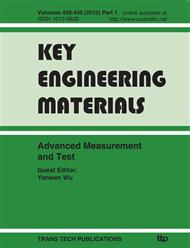p.321
p.325
p.331
p.337
p.343
p.349
p.355
p.361
p.367
A Computational Reflection Based Distributed Query Model
Abstract:
Distributed software systems often intertwine the handling of application functionalities with distribution related issues including location transparent access to services, workload allocation among different hosts, adaptation to changing conditions of the network. In the paper, a computational reflection based distributed query model is proposed. The model uses computational reflection to divide the distributed query system into two levels: the meta level and the base level. Meta objects that existed in the meta level are responsible for control and description of the base level, hence the state change of the base level could be captured by the meta level and be controlled according to the meta level’s reaction. The advantages of the model are that adapt different changes such as data resources in the network, network conditions, query plan, and provide the capability of fault tolerance.
Info:
Periodical:
Pages:
343-348
Citation:
Online since:
June 2010
Authors:
Keywords:
Price:
Сopyright:
© 2010 Trans Tech Publications Ltd. All Rights Reserved
Share:
Citation:


